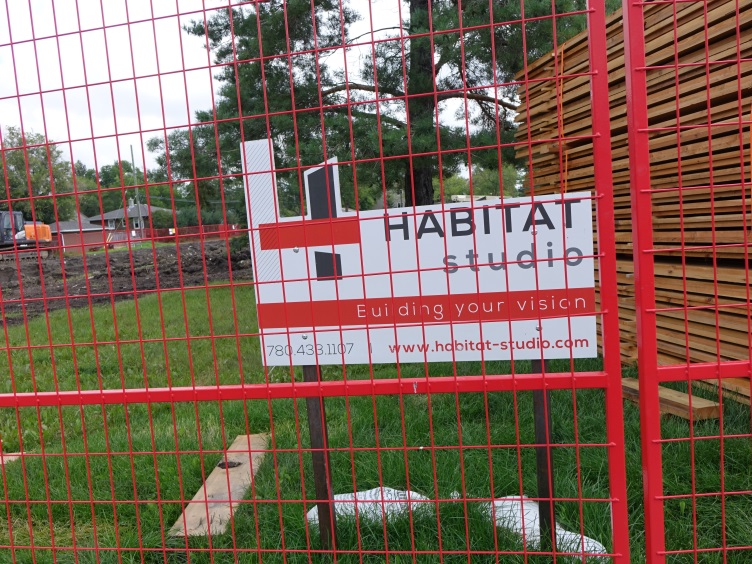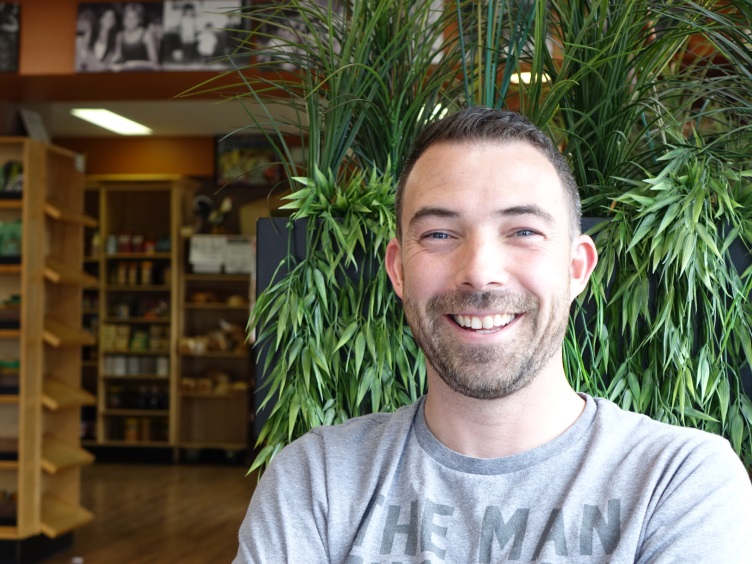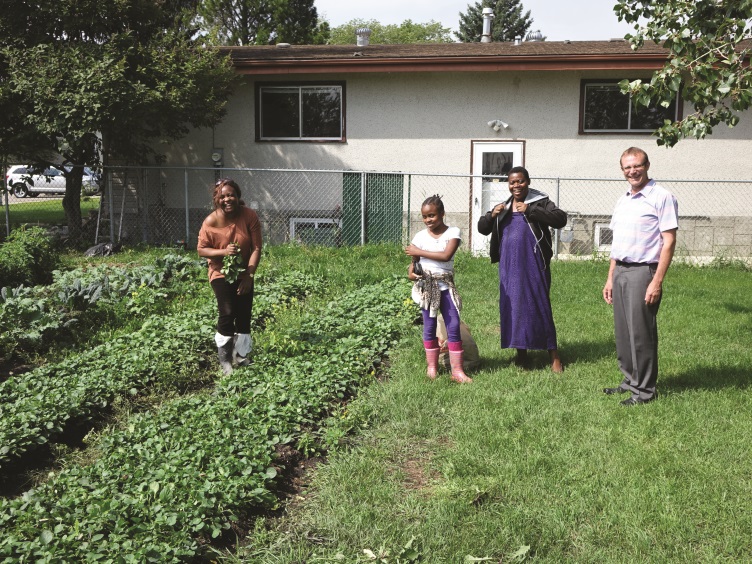ONE DAY a family walked into Westmount, Edmonton. They were a different kind of family than the Albertan congregation was used to; still they were welcomed, and that has made all the difference.
Westmount is in many ways a traditional Presbyterian congregation. It was once—and for half a century— healthy and wealthy, with a biggish church on a large lot, with a manse, in the middle of a subdivision. It’s a classic mid-century subdivision, dense with curving roads, along which are comfortable homes with front yards and backyards, and plenty of green space all around. It was a planner’s dream, with a church and community buildings smack in the middle. It was the very definition of postwar, mid-century Canada.
Westmount rode that wave well, until it didn’t swell any longer. There were tensions in the congregation; people left; hard decisions had to be faced. Seven boilers had to be fed to keep the church warm during the long winters. The congregation was one major repair or renovation bill away from folding.

Someplace in that story a family of Karens from Myanmar walked into the church one morning. As the congregation got to know them better, they educated themselves about the plight of the Karen people under the regime in the country once known as Burma. They are a people in flight, many taking refuge in Thailand and other neighbouring countries.
Westmount sponsored two Karen families. The sponsorship did something to the congregation—it enlivened them, made them more mission minded. They felt more engaged in their own faith. (The Karens were featured in this magazine six years ago.) These were good things but they weren’t paying the bills. The members had to decide their future. Their greatest asset was the church and the land. There was money there.
Under the suggestion of the new minister, Rev. Annabelle Wallace, Les Young, a former Member of the Legislative Assembly of Alberta and a stalwart congregation member, went to a meeting of an inner city housing group. The Right At Home Housing Society funds and builds affordable housing in Edmonton in partnership with other organizations.
Young returned from the meeting excited and his passion spread through the congregation. There were meetings with the society to build housing on the Westmount lot.
Along the way, Peter Amerongen also joined the design team. Amerongen is a partner in Habitat Studio in Edmonton, which builds and renovates expensive homes. Their website is filled with jaw-dropping contemporary buildings; a new aesthetic for a new age. Amerongen started in log home construction before co-founding Habitat Studio. The high-end homes are the company’s bread and butter; but establishing sustainability practices and building net-zero energy homes is Amerongen’s passion.
“This is God’s creation,” he says. “We now know what greenhouse gasses are doing to this lovely planet we’ve been given. We also know how to build zero emission buildings. Shouldn’t our houses of worship be zero emission buildings?”
A net-zero building is one that produces as much energy as it uses. To achieve that, energy use needs to be reduced as much as possible, and then new techniques and technologies need to be applied to create the energy needed to heat and light and cook. The mid-century subdivision church will be the site of Canada’s first net-zero energy townhouse development, with a daycare, a church and 16 homes. “This is just the right thing to do,” says Amerongen emphatically. He can’t understand why any new building couldn’t be the same.
The process has been long and exhausting at times. There have been many designs and lots of meetings. The local neighbourhood association signed on to the changes. When the project was taken to city council it passed smoothly. The council commended the Westmount team for proceeding with the project in the most perfect way.
It started with some refugees and ended with a futuristic home. The congregation has a new church, new Canadians have a home, the neighbourhood has something unique to brag about. And Canada has a new model for housing development, which Amerongon hopes to use as a “modest scale test-drive of the technology mix needed [to develop a large portion of land where an airport once was] and the carbon neutral communities to follow.” Westmount’s story is a parable for our times.
ANOTHER STOP ON THIS QUICKIE TOUR OF EDMONTON is St. Andrew’s, another century congregation in a mid-century building. This one, however, is in a changing neighbourhood. The minister, Rev. Mark Chiang says the area is gentrifying, though it is hard to see those signs from in front of the church. There are two nice bakeries within walking distance and down the road a tattoo parlour, the new symbol of a bourgeoning hipster ‘hood, but the main drag, 118 Ave., has a run-down vibe.
In the Oilers’ glory days when Gretzky ruled the pond, 118 was known as the Avenue of Champions, leading to Rexall Place where Stanley Cup banners once hung. The Rexall sign is down; the building will be too. A new rink, Rogers Place, has opened on 104 Ave., and the Oilers are in a quarter-century there’s-alwaysnext-year phase.
There are murals and other symbols of past glories, recalling championships, down 118 Ave. A cynic might think it an appropriate road for a string of Presbyterian churches, but they would be wrong. St. Andrew’s is a progressive and generous congregation, and home to Edmonton Urban Native Ministry.
Two non-sports and rah-rah-championship murals are painted on the side of St. Andrew’s, celebrating community and unity.
A cross hangs between the two. That too is a parable.

DAYSPRING, EDMONTON, was also changed by immigrants. Eight years ago, Rev. Heinrich Grosskopf, himself an immigrant from South Africa, got a call from a Cameroonian gentleman. “Could we worship at your church?” Of course, replied Grosskopf. Today West Africans comprise about a fifth of the congregation’s nearly 500 members, adherents and worshippers. Another 10 per cent are Afrikaners, come to worship with one of their own.
Dayspring’s history is not unlike Westmount’s—the congregation dates itself back a century; the building is centrally located in a post-war suburb. There are low-rise apartment buildings across the street, and also a discount strip mall. But around the corner are more expensive middle class homes. A golf course nearby has transfer fees of $17,800 and annual fees of $4,295—slightly selective but hardly exclusive. A solid middle-class neighbourhood.
Take a look at the congregational photo board in the church hall and there’s a nice balance between old and new faces, literally and figuratively. There are many faces, and names, that suggest an Anglo-Saxon background. Grosskopf points out a few who are legacy members. They are a connection to the traditions and culture of the congregation and denomination. There are many African faces, and also from the Caribbean; to spot the South Africans note the names. These are new members who bring new perspectives from around the world. They energize a congregation; only if a congregation wants to be energized, of course. All together there is a stability of long-term members with the excitement of new voices.
The church’s massive backyard contains a six-by-15 metre vegetable garden. There Petula, whose husband was the one who called Grosskopf many years earlier, is standing in her boots, lined with grocery bags, weeding and harvesting. When she’s asked the most clichéd questions immigrants are asked all the time, she laughs. “We chose to come here. We knew it would be cold. You only put on something warm.” Dayspring, she says, has been an integral part of her family’s integration into Canada.
Stable and steady, with a history of careful leadership, Dayspring is a different kind of parable. Asked where he sees the congregation headed over the next while, Grosskopf talks of the missional church, of developing a deeper relationship between the congregation and the surrounding neighbourhood.

